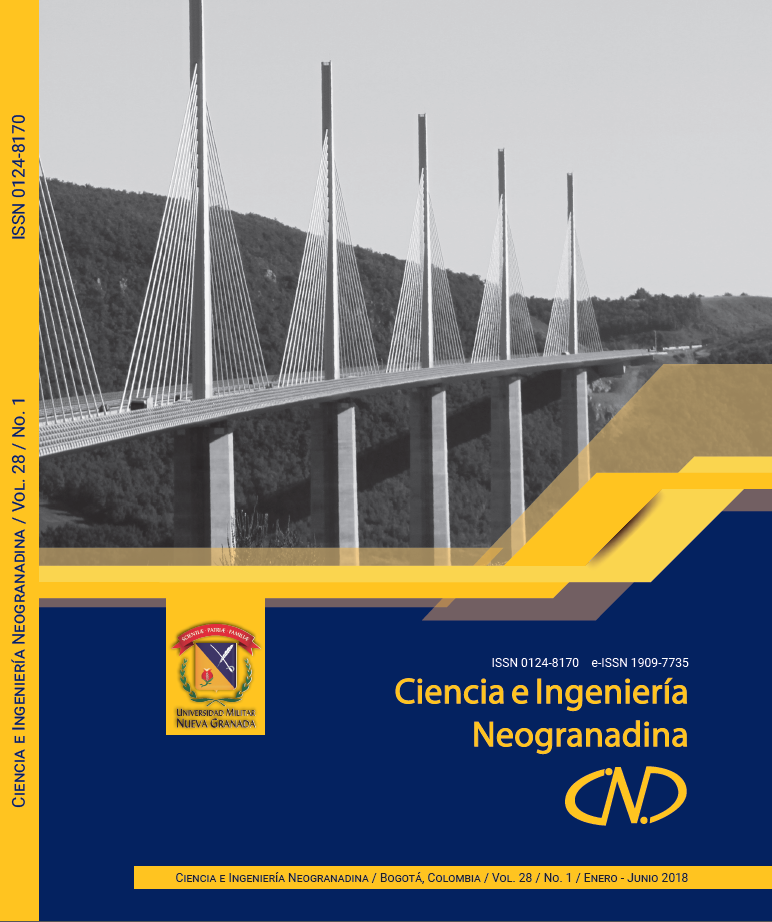Cell Averaging CFAR Detector with Scale Factor Correction through the Method of Moments for the Log-Normal Distribution
Abstract
The new LN-MoM-CA-CFAR detector is introduced, exhibiting a reduced deviation of the operational false alarm probability from the value conceived in the design. The solution solves a fundamental problem of CFAR processors that has been ignored in most proposals. Indeed, most of the previously proposed schemes deal with sudden changes in the clutter level, whereas the new solution has an improved performance against slow statistical changes that occur in the background signal. It has been proven that these slow changes have a remarkable influence on the selection of the CFAR adjustment factor, and consequently in maintaining the false alarm probability. The authors took advantage of the high precision achieved by the MoM (Method of Moments) in the estimation of the Log-Normal (LN) shape parameter, and the wide application of this distribution to radar clutter modeling, to create an architecture that offers precise results and it’s computationally inexpensive at the same time. After an intensive processing, involving 100 million Log-Normal samples, a scheme, which operates with excellent stability reaching a deviation of only 0,2884 % for the probability of false alarm of 0,01, was created, improving the classical CA-CFAR detector through the continuous correction of its scale factor.
Downloads
References
M. A. Richards, J. A. Scheer and W. A. Holm. Principles of Modern Radar Vol I Basic Principles. New Jersey, United States: Scitech Publishing, 2010.
W. L. Melvin and J. A. Scheer. Principles of Modern Radar, Vol III Radar Applications. New Jersey, United States: Scitech Publishing, 2014.
K. Ward, R.Tough and S.Watts. Sea Clutter Scattering, the K Distribution and Radar Performance, (2nd. Ed.). London, United Kingdom: The Institution of Engineering and Technology, 2013. DOI: https://doi.org/10.1049/pbra025e
M. I. Skolnik, Radar Handbook (3er. Ed.). New York, United States: McGraw-Hill, 2008.
H. Meikle. Modern Radar Systems (2nd. Ed.). Boston, United States: Artech House, 2008.
H. Rohling, “Radar CFAR Thresholding in Clutter and Multiple Target Situations,” IEEE Transactions on Aerospace and Electronic Systems, vol. 19, no. 4, pp. 608-621, 1983. DOI: https://doi. org/10.1109/TAES.1983.309350
Y. Qin and H. Gong, “A New CFAR Detector based on Automatic Censoring Cell Averaging and Cell Averaging,” TELKOMNIKA, vol. 11, no. 6, pp. 3298-3303, 2013. DOI: https://doi. org/10.11591/telkomnika.v11i6.2686
A. Kumar Yadav and L. Kant, “Moving Target Detection using VI-CFAR Algorithm on MATLAB Platform,” International Journal of Advanced Research in Computer Science and Software Engineering, vol. 3, no. 12, pp. 915-918, 2013.
M. B. El Mashade, “Performance Analysis of the Modified Versions of CFAR Detectors in Multiple-Target and Nonuniform Clutter,” Radioelectronics and Communications Systems, vol. 56, no. 8, pp. 385-401, 2013. DOI: https://doi. org/10.3103/S0735272713080013
S. W. Shin and Y. K. Seo, “Modified Variability-Index CFAR Detection Robust to Heterogeneous Environment,” in Int. Conf. on Systems and Electronic Engineering, Phuket, Thailand, 2012, pp. 6-12.
J. Z. Yim, C. R. Chou and W. K. Wong, “A Study of the Statistics of Sea Clutter in the Northern Coast of Taiwan,” in Proceedings of the Seventeenth Int. Offshore and Polar Engineering Conf., Lisbon, Portugal, 2007, pp. 1-6.
Q. Ping, “Analysis of Ocean Clutter for Wide-Band Radar Based on Real Data,” in International Conference on Innovative Computing and Cloud Computing, Wuhan, China, 2011, pp. 121-124. DOI: https://doi. org/10.1145/2071639.2071669
Z. Chen, X. Liu and Z. Wu, “The Analysis of Sea Clutter Statistics Characteristics Based on the Observed Sea Clutter of Ku-Band Radar,” in IEEE Proceedings of the Int. Symp. on Antennas & Propagation, 2013, pp. 1183-1186.
A. Mezache, F. Soltani and M. Sahed, "A Model for Non Rayleigh Sea Clutter Amplitudes using Compound Inverse Gaussian,” in IEEE Radar Conference (RadarCon13), 2013, Apr. 29-May 3. DOI: https:// doi.org/10.1109/RADAR.2013.6585989
J. R. Machado Fernández and J. C. Bacallao Vidal, “MATE-CFAR: Ambiente de Pruebas para Detectores CFAR en MATLAB,” Telem@tica, vol. 13, no. 3, pp. 86-98, 2014.
S. Sayama and S. Ishii, “Suppression of Log-Normal Distributed Weather Clutter Observed by an S-Band Radar,” Wireless Engineering and Technology, vol. 4, no. 3, pp. 125-133, 2013. DOI: https:// doi.org/10.4236/wet.2013.43019
Y. Dong. “Distribution of X-Band High Resolution and High Grazing Angle Sea Clutter,” Technical Report DSTO-RR-0316, 2006.
J. R. Machado Fernández and J. C. Bacallao Vidal, “Improved Shape Parameter Estimation in K Clutter with Neural Networks and Deep Learning,” International Journal of Interactive Multimedia and Artificial Intelligence, vol. 3, no. 7, pp. 96-103, 2016. DOI: https://doi. org/10.9781/ijimai.2016.3714
J. W. McLeod, “An Investigation of the CDF-Based Method of Moments,” Thesis of Master, Department of Civil Engineering, University of Toronto, Toronto, 1998.
J. R. Machado Fernández, “Estimation of the Relation between Weibull Distributed Sea clutter and the CA-CFAR Scale Factor,” Journal of Tropical Engineering, vol. 25, no. 2, pp. 19-28, 2015.
J. R. Machado Fernández and J. C. Bacallao Vidal, “Optimal Selection of the CA-CFAR Adjustment Factor for K Power Sea Clutter with Statistical Variations,” Revista Ciencia e Ingeniería Neogranadina, vol. 27, no. 1, pp. 61-76, 2017. DOI: https://doi.org/10.18359/rcin.1714
S. Sayama and S. Ishii, S. “Amplitude Statistics of Sea Clutter by MDL Principle,” IEEJ Transactions Fundamentals and Materials, vol. 132, no. 10, pp. 886-892, 2012. DOI: https://doi. org/10.1541/ieejfms.132.886
K. Rajalakshmi Menon, N. Balakrishnan and M. Janakiraman, “Characterization of Fluctuation Statistics of Radar Clutter for Indian Terrain,” IEEE Transactions on Geoscience and Remote Sensing, vol. 33, no. 2, pp. 317- 324, 1995.
S. Sayama and S. Ishii, “Amplitude Statistics of Ground Clutter from Town and Hill Observed by S-band Radar,” IEEJ Transactions Fundamentals and Materials, vol. 131, no. 11, pp. 916-923, 2011. DOI: https://doi.org/10.1541/ ieejfms.131.916
Y. Dong. Clutter Spatial Distribution and New Approaches of Parameter Estimation for Weibull and K-Distributions. Edingburgh, South Australia, Australia: DSTO Systems Sciences Laboratory, 2004.
W. Stehwien, “Statistical and Correlation Properties of High Resolution X-band Sea Clutter,” in Proceedings of 1994 IEEE National Radar Conference, pp. 46-51, 1994. DOI: https://doi. org/10.1109/NRC.1994.328096
A. Farina, F. Gini and M. V. Greco, “High Resolution Sea Clutter Data: Statistical Analysis of Recorded Live Data,” IEE Proceedings on Radar, Sonar and Navigation, vol. 144, no. 3, pp. 121-130, 1997. DOI: https://doi.org/10.1049/ip-rsn:19971107
S. Ishii, S. Sayama and K. Mizutani, “Effect of Changes in Sea-Surface State on Statistical Characteristics of Sea Clutter with X-band Radar,” Wireless Engineering and Technology, vol. 2, no. 3, pp. 175-183. DOI: https://doi. org/10.4236/wet.2011.23025
N. Weiping, Y. Weidong and B. Hui, “Statistical Analysis of High Resolution TerraSAR-X Images for Ground Targets Detection,” in Seventh International Conference on Image and Graphics, Qingdao, China, Jul. 26-28, 2013, pp. 343-347. DOI: https://doi.org/10.1109/ICIG.2013.74
J. Jurgens Strydom, “Generic Ground Clutter Simulation for Radar Testing and Evaluation,” Thesis of Master, Radar Remote Sensing Group, Department of Electrical Engineering, University of Cape Town, Cape Town, 2012.
K. Ward, R. Tough and S. Watts. Sea Clutter. Scattering, the K distribution and Radar Performance. London, United Kingdom: The Institution of Engineering and Technology, 2006.
M. Greco, F. Bordoni and F. Gini, “X-Band Sea-Clutter nonstationarity: Influence of Long Waves,” IEEE Journal of Oceanic Engineering, vol. 29, no. 2, pp. 269-283, 2004. DOI: https://doi. org/10.1109/JOE.2004.828548
S. Sayama and M. Sekine, “Weibull, Log-Weibull and K-Distributed Ground Clutter Modelling Analyzed by AIC,” IEEE Transactions on Aerospace and Electronic Systems, vol. 37, no. 3, pp. 1108-1113, 2001. doi: https://doi. org/10.1109/7.953262
J. R. Machado Fernández and J. C. Bacallao Vidal, “Procesador de Promediación con Corrección Adaptativa del Factor de Ajuste Mediante Redes Neuronales Artificiales,” in VIIII Congreso Internacional de Telemática y Telecomunicaciones, Convención Científica de Ingeniería y Arquitectura ‘16, Palacio de las Convenciones, (La Habana, Cuba), Oct. 21-25, 2016, pp. 237-246.











